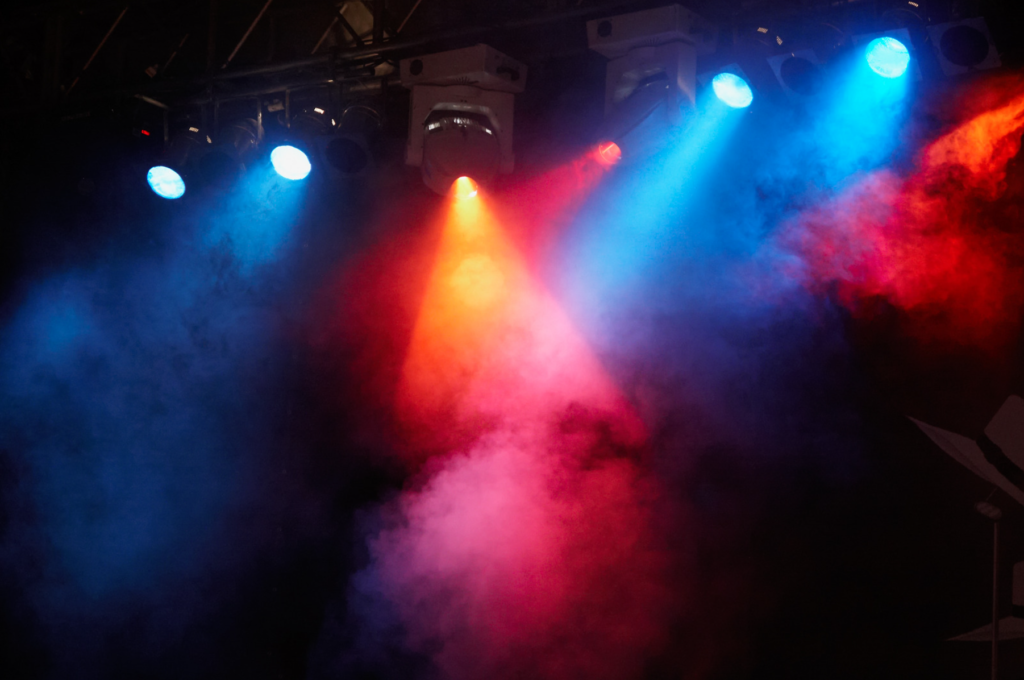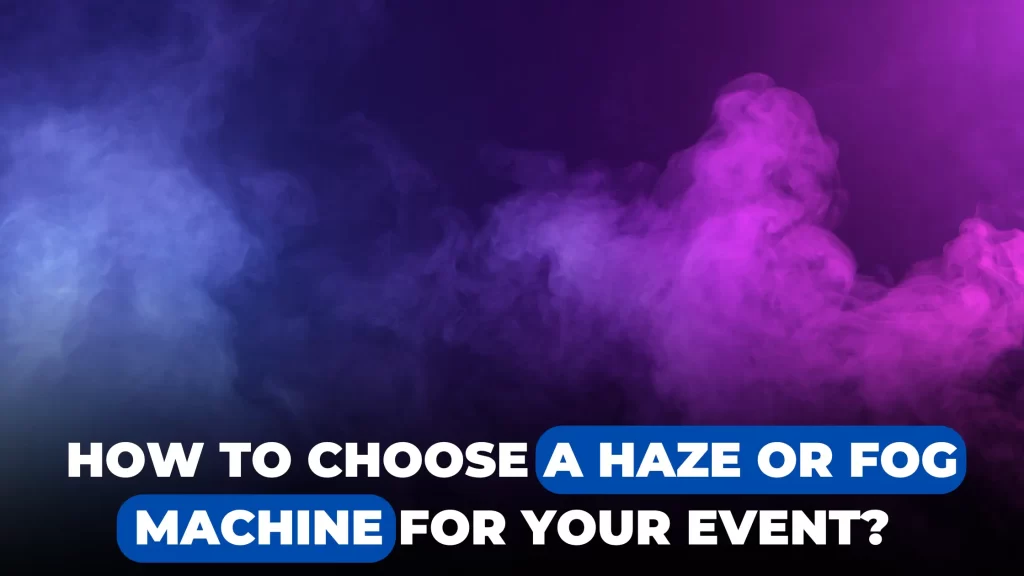Stage lighting plays an essential role in live performances, helping to elevate the experience for both the audience and performers. Whether you’re planning a concert, theater production, or corporate event, the right stage lights create the mood, focus attention, and enhance the visual storytelling. From understanding the types of lights to designing an effective lighting setup, this guide will walk you through everything you need to know to use stage lights for your next live show.
If you’re in need of professional lighting for your show, lighting rental services in Calgary can provide the equipment and expertise required to make your event shine. Check out our lighting equipment rental services for high-quality options.
Understanding the Basics of Stage Lighting
To effectively use stage lighting for your show, it’s important to grasp the fundamentals of how lighting impacts a performance. Lighting not only ensures visibility but also helps set the tone, mood, and atmosphere of the event.
Types of Stage Lights

Choosing the right type of lights is crucial for achieving the desired effect:
- LED Lights: These are versatile, energy-efficient, and offer a wide range of colors. Ideal for creating dynamic light patterns or mood lighting.
- Spotlights: Used to highlight specific performers or objects on stage. Spotlights help direct the audience’s attention where it’s needed most.
- Floodlights: Provide a broad, even wash of light, making them perfect for lighting up large areas of the stage.
- PAR Cans: These are a staple in stage lighting, offering intense beams that are often used for concerts and high-energy events.
- Moving Heads: These dynamic lights can be programmed to move and change angles, adding excitement and versatility to your light show.
Purpose of Stage Lighting in a Live Show
Stage lighting serves various functions that can transform an ordinary performance into a visually captivating one:
- Visibility: The primary purpose of stage lighting is to ensure that the performers can be clearly seen by the audience.
- Mood and Atmosphere: Different lighting intensities and colors evoke various emotions, from excitement to tension.
- Focusing Attention: By adjusting the focus and direction of lights, you can direct the audience’s attention to key moments or performers.
- Enhancing Storytelling: Through creative lighting effects, you can emphasize critical scenes and transitions, enhancing the narrative flow of your performance.
By understanding these basics, you’ll be able to create a lighting setup that enhances your live show’s overall impact.
Key Components of Stage Lighting Equipment
To execute a professional lighting design, it’s important to have the right equipment. Here’s a breakdown of the main components:
- Lighting Consoles: The brain of the operation. Lighting consoles allow you to program and control light cues during a show.
- Dimmers: These devices control the intensity of the lights, allowing you to adjust brightness smoothly.
- Gels and Filters: Transparent color sheets placed over lights to change their color, essential for creating mood lighting.
- Gobo Projectors: These project specific patterns or images onto the stage, adding texture and depth to your lighting design.
- DMX Controllers: Digital controllers used to manage multiple lights and special effects, ensuring synchronization between different elements of the show.
Looking for the right equipment? If you’re in Calgary, consider using our lighting rental service to get top-of-the-line gear for your event. For more information, check out our lighting equipment rental services.
Planning Your Stage Lighting Setup
Careful planning is essential for an effective stage lighting setup. Understanding your venue, performance style, and audience perspective will ensure that your lighting enhances the overall experience.

How to Design a Lighting Plan for Your Show
When planning your lighting setup, consider the following factors:
- Venue and Stage Size: Understanding the dimensions of the stage and how the lights will interact with the space is crucial. In larger venues, you’ll need more powerful lights, while smaller spaces require more focused lighting solutions.
- Performance Style: The type of event also influences your lighting choices. A rock concert, for instance, will have a different lighting design than a dramatic theater production or a corporate event.
- Audience Positioning: Ensure the lights are placed in a way that doesn’t blind the audience or obstruct their view of the performance.
Selecting the Right Stage Lights for Different Settings
Different events require different lighting setups, so be sure to choose accordingly:
- Concerts: For a high-energy concert, you’ll need dynamic lights like moving heads and colorful LED lights. Using special effects like strobes or lasers can also heighten the excitement.
- Theatrical Plays: For plays, spotlights are crucial for highlighting actors. Soft ambient lighting can help create the mood, while backlighting adds depth to the set.
- Dance Performances: Lighting plays a significant role in accentuating movement. Side and backlighting work well in dance shows, creating shadows that enhance the dancers’ movements.
- Corporate Events: Clean and professional lighting is key. You may want to use subtle LED lights and soft floodlights to create an elegant, neutral ambiance.
Importance of Lighting Angles and Positions
Lighting angle and positioning are crucial for creating the right visual effects. The following angles are commonly used in stage lighting:
- Front Lighting: Illuminates the performers’ faces and ensures they’re clearly visible to the audience.
- Backlighting: Creates depth and dramatic silhouettes, often used for emotional or mysterious scenes.
- Side Lighting: Highlights the contours of the performers and is often used in dance performances to emphasize movement.
- Uplighting: Adds a unique and dramatic effect, casting shadows upwards, which can be eerie or mysterious depending on the performance.
Using Color in Stage Lighting
Color is a powerful tool in creating the right atmosphere for your performance. Here are some tips on how to use color effectively:
- Creating Mood: Warm colors like red, yellow, and orange convey excitement or warmth, while cool tones like blue and green create a calming or introspective mood.
- Layering Colors: Layering multiple colors adds depth and texture to your lighting setup, which can enhance both the performers and the set.
- Warm vs. Cool Tones: Use warm tones for scenes of high energy and excitement and cool tones for calmer, more dramatic moments.
The Role of Special Effects in Stage Lighting
Special effects can elevate the visual experience of your live show. Popular effects include:
- Smoke Machines: These help enhance the visibility of light beams and add a sense of mystery.
- Strobe Lights: Flashing lights create a feeling of intensity or urgency, often used in high-energy moments.
- Laser Effects: Laser lights can be synchronized with music or other elements to create a futuristic or dynamic look.
Technical Aspects of Stage Lighting
Setting Up Your Lighting Console
Once you’ve designed your lighting plan, you need to set up and program your lights. This is done using a lighting console, where you can:
- Pre-program Light Cues: Set up different lighting effects and transitions ahead of time to ensure a seamless show.
- Understand DMX Control: Use a DMX controller to manage multiple lights and create intricate lighting effects.
- Synchronize with Music: For concerts or dance shows, synchronize lighting cues with the music for a more immersive experience.
Managing Light Transitions During a Show
Smooth transitions are key to maintaining the flow of your performance. Use fades, blackouts, and color shifts to move from one scene to the next without distracting the audience.
Enhancing Audience Experience with Stage Lights
Your lighting setup can dramatically affect how the audience experiences the performance. Coordinating lighting with the performers’ movements and musical cues creates a more engaging and immersive atmosphere.




